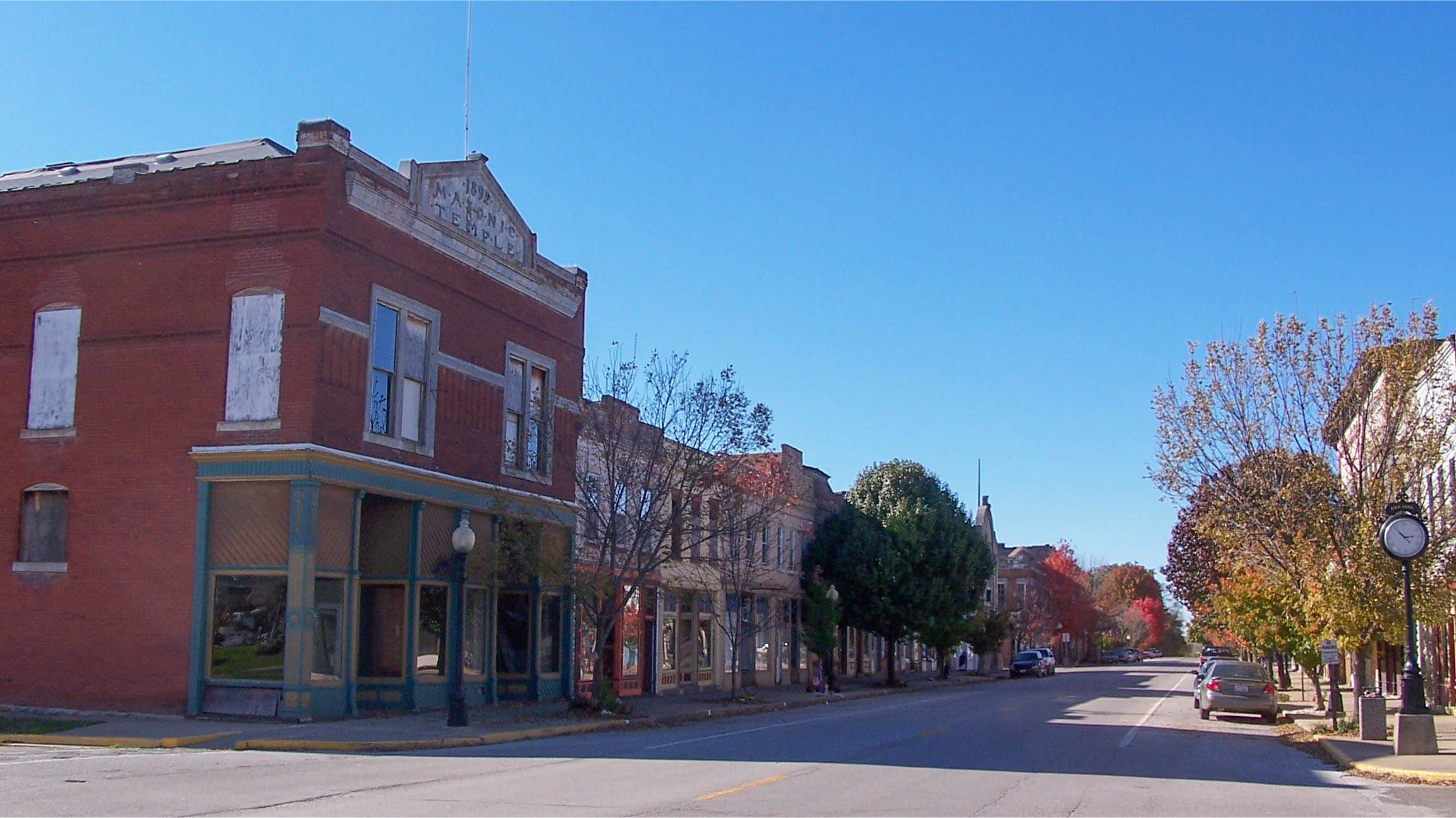Visitors Guide to Kinderhook
Pike County, Illinois
Kinderhook is located along the Great River Road in the Mississippi River bottomlands of northwestern Pike County. The town was founded in 1836 by Chester Churchill and Bridge Whitten and named after Kinderhook, NY from where the two men had come from. Kinderhook is a Dutch term meaning "children's corner." Both Churchill and Whitten had been longtime settlers in the area and it is believed that Churchill donated the land on which the town was built. Most of the town lies on the hill but the business section has always been at the foot of the hill along Quincy Street. The first settler in the town was Peter Harper and the first store was operated by Churchill.
In 1843 a set of six small, bell-shaped pieces of brass with strange engravings “discovered” in 1843 in an Indian mound near Kinderhook. The plates, known as the Kinderhook Plates, were designed to appear ancient, but were in fact a forgery created by three men (Bridge Whitten, Robert Wiley, and Wilburn Fugate) in Kinderhook who were hoping to trick the Latter Day Saints, whose headquarters at the time was in nearby Nauvoo. According to Latter Day Saint belief, the Book of Mormon was originally translated from a record engraved on Golden Plates by the ancient inhabitants of the Americas. The hoax was a success as the plates were brought Joseph Smith, leader of the Latter Day Saints, who recorded in his journal on May 1, 1843, he says: "I have translated a portion of them, and find they contain the history of the person with whom they were found. He was a descendant of Ham, through the loins of Pharaoh, king of Egypt, and that he received his kingdom from the Ruler of heaven and earth." In 1879 Fugate made the claim that the plates were a hoax, although not much was made of this claim as the Mormons had since moved to Utah and many Mormons had long believed in the validity of the plates. In 1920 the Chicago Historical Society acquired what appeared to be one of the original Kinderhook plates and subjected it to a number of nondestructive tests, with inconclusive results. In 1980 Northwestern University was given permission to conduct s series of destructive tests and concluded that the plate was one of the Kinderhook six and that it was of nineteenth-century manufacture. It is generally accepted now that the Kinderhook plates weren’t anything more than a frontier hoax.
In 1993 it was chosen as one of the twelve most unique post offices in the United States. Local physician, Dr. P.H. Dechow, incorporated some of his rock collection in the exterior walls. You will be able to identify other objects such as Indian artifacts, antiques jugs, Model T caps, old playing marbles, and rattlesnake rattles.











